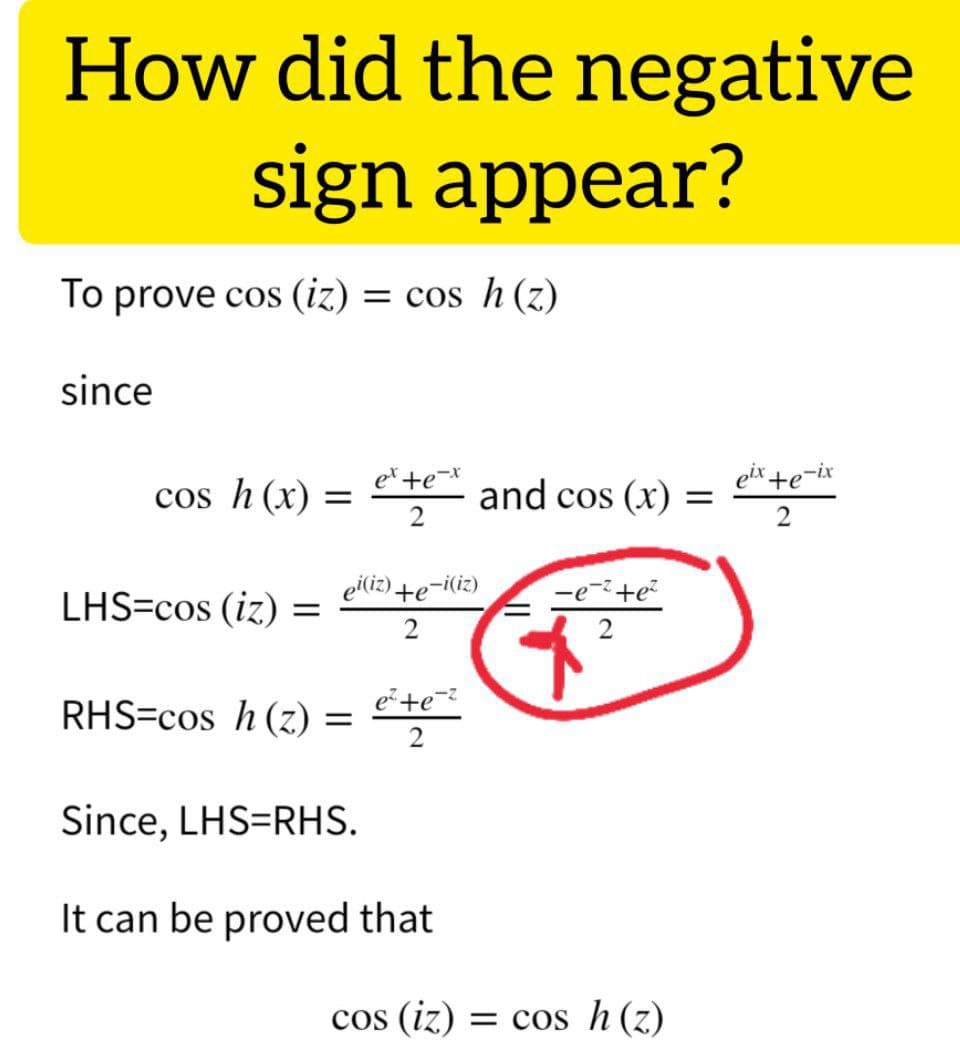How did the negative sign appear? To prove cos (iz) = cos h (z) = cos since et+e¬* eix +e-ix cos h (x) and cos (x) = 2 2 LHS=cos (iz) e(12) +e-i(iz) -e-+e? 2 2 RHS=cos h (z) : e+e=? Since, LHS=RHS.
How did the negative sign appear? To prove cos (iz) = cos h (z) = cos since et+e¬* eix +e-ix cos h (x) and cos (x) = 2 2 LHS=cos (iz) e(12) +e-i(iz) -e-+e? 2 2 RHS=cos h (z) : e+e=? Since, LHS=RHS.
Algebra & Trigonometry with Analytic Geometry
13th Edition
ISBN:9781133382119
Author:Swokowski
Publisher:Swokowski
Chapter6: The Trigonometric Functions
Section6.3: Trigonometric Functions Of Real Numbers
Problem 44E
Related questions
Question
I need the answer as soon as possible

Transcribed Image Text:How did the negative
sign appear?
To prove cos (iz)
= cos h (z)
since
cos h (x) :
e+e-*
and cos (x)
eix +e-ix
LHS=cos (iz) :
eiliz) +e¬i(iz)
-e-?+e?
2
e+e-z
RHS=cos h (z)
2
Since, LHS=RHS.
It can be proved that
cos (iz) = cos h (z)
Expert Solution
This question has been solved!
Explore an expertly crafted, step-by-step solution for a thorough understanding of key concepts.
Step by step
Solved in 2 steps with 2 images

Recommended textbooks for you

Algebra & Trigonometry with Analytic Geometry
Algebra
ISBN:
9781133382119
Author:
Swokowski
Publisher:
Cengage

Trigonometry (MindTap Course List)
Trigonometry
ISBN:
9781337278461
Author:
Ron Larson
Publisher:
Cengage Learning

Algebra & Trigonometry with Analytic Geometry
Algebra
ISBN:
9781133382119
Author:
Swokowski
Publisher:
Cengage

Trigonometry (MindTap Course List)
Trigonometry
ISBN:
9781337278461
Author:
Ron Larson
Publisher:
Cengage Learning